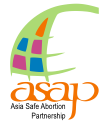Abortion, A Human Rights Issue in Pakistan, and Worldwide
In her second blog for ASAP, Uzma Farooq, an Advocacy Officer for Women’s Health at Shirkat Gah – Women’s Resource Centre in Pakistan, highlights that safe abortions is a human rights issue.
Few issues regarding women’s bodily rights are as stigmatized and viewed as negatively as that of abortion. Abortions are denied to women around the world, even where there is no illegality or there are exceptions to the law prohibiting it. By way of example, in Peru, abortion is not legal but there exists a health exception. Yet the case of a 13-year-old girl, which reached the CEDAW Committee in L.C V Peru, U.N. Doc. CEDAW/C/50/D/22/2009 (4 November 2011), exemplified the drastic consequences an unwanted pregnancy can have on the woman carrying it. L.C was a 13-year-old girl who was raped by an uncle repeatedly from the age of eleven. When she became pregnant as a result, she tried to commit suicide by jumping off the roof of a three-story building. This did not result in her death but caused her severe spinal injury. Once under medical treatment, it turned out she needed surgery. But, to undergo the surgery the pregnancy would have to be terminated. The doctors refused to terminate and provide her the treatment she needed.
Consequently, she carried the pregnancy to term but is now paraplegic. Although L.C received compensation after the case was decided by the CEDAW committee, the case is indicative of just how far the misguided preference for the life of a foetus can prevail over the life of the woman.
A Girl Who Changed the World from Center for Reproductive Rights on Vimeo.
Safe abortion advocates are no strangers to the fact that illegality of abortion does not reduce their number in practice. Figures will be relatively the same, but with a higher number of unsafe abortions where there are legal restrictions on obtaining the procedure, and where there is lack of access to contraception and to quality health care services.
In 2010 Shirkat Gah conducted an in-depth research, with the support of David & Lucile Packard Foundation, on monitoring the implementation of MDG 5 in Pakistan. A case study was found in rural Sindh, of a seventeen year-old unmarried girl, who had become involved with a married man and finding herself pregnant, had resorted to having a traditional birth attendant insert a stick intra vaginally. This succeeded in terminating the pregnancy but left her with permanent uterine scarring. Another case in Balochistan told the story of a young woman who was very poor and whose husband had also agreed to an abortion as the couple felt that they could not sustain the child. Once reaching the health facility, not sure what to say, the woman told the doctor that she had not been keeping well, she was very weak and thought it better to terminate the pregnancy. The doctor’s response was that to do so “was not necessary’. She then pleaded with the doctor saying she was having intermittent bleeding, but again the apathetic response was that it was not an issue, it could be resolved with medication and that she should look around her, there are other women, too, carrying their pregnancies without asking for abortion.
 Another study which Shirkat Gah was commissioned for (yet to be published), on the impact of early age marriages, revealed that of twenty case studies, five were found of young girls inducing abortions, with ingestion of rat poison being the most common method. The same even resulted in one young girl’s death. These studies indicate a few things. Firstly, from even a small sample, cases of unsafe abortion can be found, so it is anyone’s guess how frequently it really happens. Secondly, reasons for unsafe abortion can range from service provider bias to lack of information and access regarding health services to an inability to exercise control over one’s body- as seen in the case of child marriages.
Another study which Shirkat Gah was commissioned for (yet to be published), on the impact of early age marriages, revealed that of twenty case studies, five were found of young girls inducing abortions, with ingestion of rat poison being the most common method. The same even resulted in one young girl’s death. These studies indicate a few things. Firstly, from even a small sample, cases of unsafe abortion can be found, so it is anyone’s guess how frequently it really happens. Secondly, reasons for unsafe abortion can range from service provider bias to lack of information and access regarding health services to an inability to exercise control over one’s body- as seen in the case of child marriages.
United Nations treaty monitoring bodies have repeatedly criticized Pakistan for making abortion a punishable offence, and called upon the state to ensure that women do not have to seek unsafe abortions, especially due to lack of services for fertility control. In 2007, the CEDAW Committee, in its concluding observations on Pakistan (U.N. Doc. CEDAW/C/PAK/CO/3 (2007)) stated in paragraph 40, “The Committee is concerned about women’s lack of access to health care, in particular to sexual and reproductive health services, especially in rural areas, and the link between the rate of abortion and low contraceptive use. Clandestine abortions being a major cause of maternal mortality, the Committee is deeply concerned that abortion is a punishable offence under Pakistani law, which may lead women to seek unsafe, illegal abortions, with consequent risks to their life and health.” The Convention on the Rights of the Child (CRC) Committee also noted concern in its concluding observations on Pakistan in 2009 that “clandestine abortion is a major cause of maternal mortality” (U.N. Doc. CRC/C/PAK/CO/3-4 (2009)).
In L.C V Peru, mentioned above, the CEDAW Committee not only found the state liable to pay compensation to L.C but also called on the state to establish a mechanism for effective access to therapeutic abortion and to take measures to ensure that reproductive rights are known and observed in all health-care facilities and in particular to implement measures to train and encourage health providers to change their attitudes and behavior in relation to women seeking reproductive health services and respond to specific health needs related to sexual violence.
The challenges are great, and abortion is a complex issue not only in Pakistan but across the globe, but it is my sincere hope that eventually the ideal that Peru was bound to in L.C V Peru can become an attainable reality for us as well.
Uzma Farooq, is a Karachi-based lawyer who is currently working as an Advocacy Officer for Women’s Health at Shirkat Gah – Women’s Resource Centre. Read Uzma’s first article published on August 20.
Shirkat Gah literally means a place of participation. It was formed as a non-hierarchical collective in 1975 by a group of women with shared perspectives on women’s rights and development. The organization’s fundamental goal is to encourage women to play a full and equal role in society by promoting and protecting the social and economic development of women already participating in, or wanting to participate in national development.
Correction: The L.C. V Peru case involved only the state of Peru. An erroneous reference to Argentina has been corrected.






